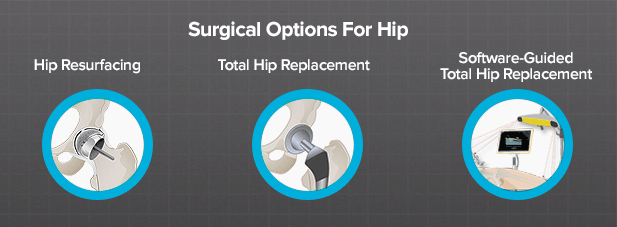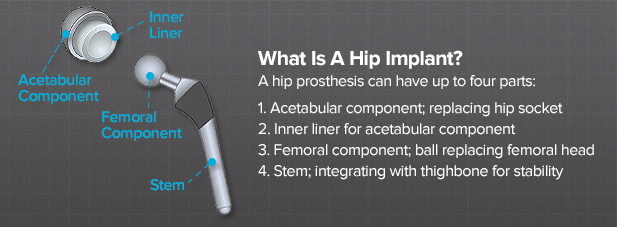
Surgery is considered if your hip pain is significantly impacting your quality of life and preventing you from participating in your normal activities, and if normal hip pain relief is not working. For patients with advanced joint disease who have decided on surgery with their doctor, hip replacement can offer a realistic chance for pain relief and a return to previous activities.
Today, hip replacement surgery is a common procedure considered generally successful in relieving pain and restoring hip function. In fact, nearly 2.9 million joint replacement procedures are performed globally each year, including more than 1.4 million hip replacements.1
Depending on the severity of pain and degree of limited mobility, you and your doctor may consider different types of surgical treatments:
Luckily, there are great tools and technologies available to surgeons today, helping to minimize the risks of hip surgery. An important advancement to further support the placement of prosthetic hip components is the use of medical technology in and outside the operating room, such as software-guided surgery systems and digital templating software.

A hip prosthesis, or implant, usually consists of four artificial parts: